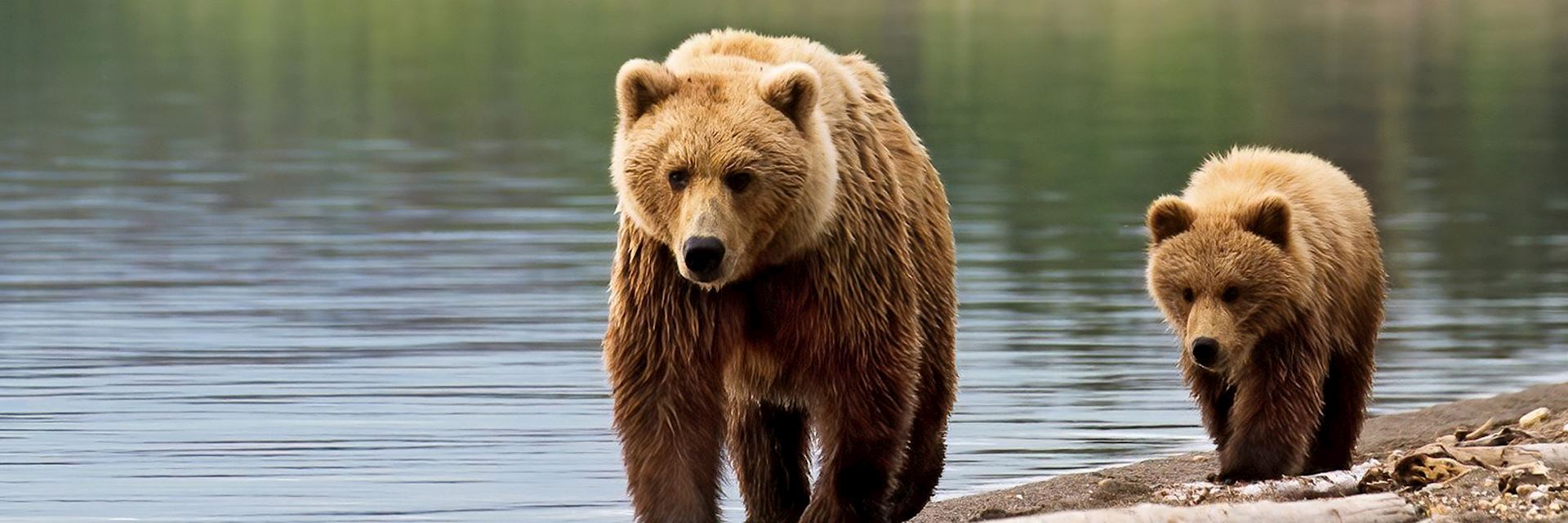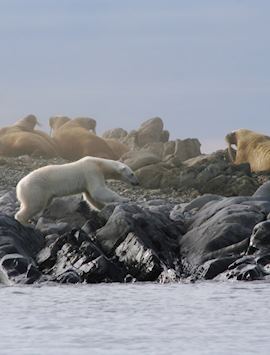Canada, Alaska and The Arctic are known for their huge tracts of pristine wilderness, the sheer scale of which has done much to protect the abundant concentrations of animals.
The nutrient-rich seas attract some of the world’s greatest concentrations of seabirds but also support countless marine mammals: Canada’s coast can offer some of the world’s best whale sightings.
On land the large mammals comfortably outnumber the human population. Here it is possible to see polar bears hunt from ice floes, black bears slouch through the woods and grizzly bears fish salmon out of fast-flowing rivers. Bison still congregate in herds while elk, moose, caribou and musk oxen provide thrilling encounters.
Wildlife itinerary ideas
Start thinking about your experience. These itineraries are simply suggestions for how you could enjoy some of the same experiences as our specialists. They’re just for inspiration, because your trip will be created around your particular tastes.
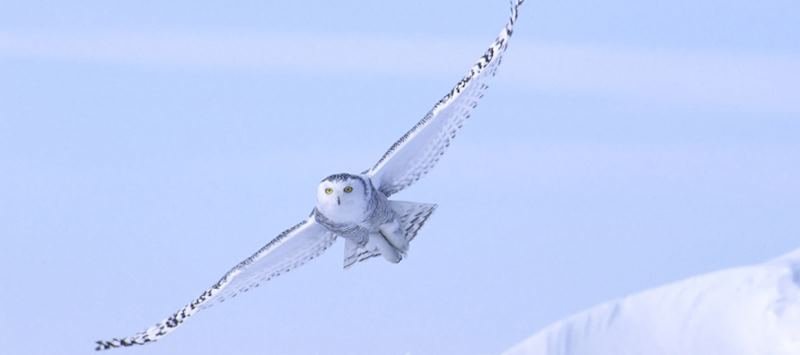
Birds
Due to their vast size Canada, Alaska and the Arctic have an incredible variety of bird species, both resident and migratory.
Alaska and western British Columbia are renowned for huge populations of bald eagles whilst the cliffs of the Maritime Provinces echo to the enthralling cacophony of shrieks and calls of some of the world’s largest seabird colonies, providing ideal nesting conditions for thousands of kittiwakes, murres and razorbills.
The Queen Charlotte Islands are known as the “Canadian Galapagos” and a third of the world’s population of murrelets nest here along with horned puffins and Peale's peregrine falcons. Oak Hammock Marsh in southern Manitoba is one of the finest bird sanctuaries on the continent where in the Autumn up to half a million geese arrive on their way south.
Other notable places to see birds are the remarkable Point Pelee National Park in Ontario, and the Ile Bonaventure in Québec which with 60,000 birds is home to North America’s largest gannet colony.
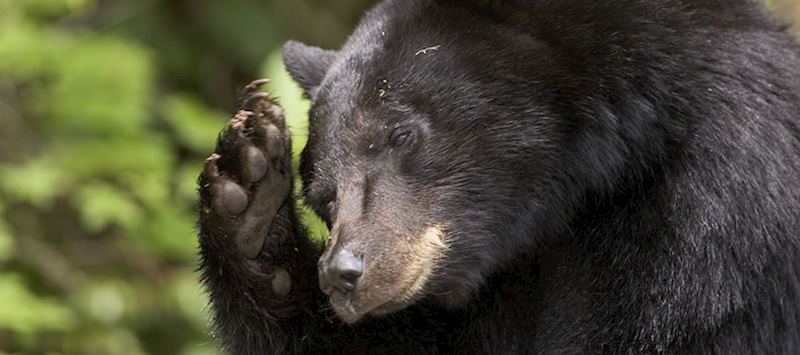
Black bears
The American Black Bear is the most common bear species in North America, living throughout the continent and in all Canadian provinces and territories apart from Prince Edward Island.
Where and when to see them
Black bears can be seen relatively easily during summer months whilst driving or travelling by train through the less populated regions of North America. National and Provincial parks in particular are perfect places for having a chance encounter with these bears, especially Banff and Jasper national parks, Algonquin Provincial Park in Ontario and the Mastigouche Wildlife Reserve in Québec. Northern Vancouver Island, interior British Columbia and Riding Mountain National Park in Manitoba are also excellent places to see them.
Where to stay
We can recommend a variety of accommodation according to your taste, style and budget. As the black bear population is larger and more widespread than that of the grizzly, a wider range of accommodation options are available. Please speak with our country specialists to discuss your requirements.
Black bear key facts
- They can be up to 7 ft tall and males weigh between 115 and 365 kg (250 and 800 lb).
- Though they generally have shaggy black hair, the coat can vary in colour from white through to chocolate-brown, cinnamon, and blonde.
- They can run at speeds up to 30 miles per hour (48 km/h) and are good swimmers.
- Black bears hibernate in dens in tree cavities, under logs or rocks, in banks or caves.
- Cubs are generally born in January or February. They are very small, about 10 to 14 ounces, and are blind, nearly hairless, and helpless when born.
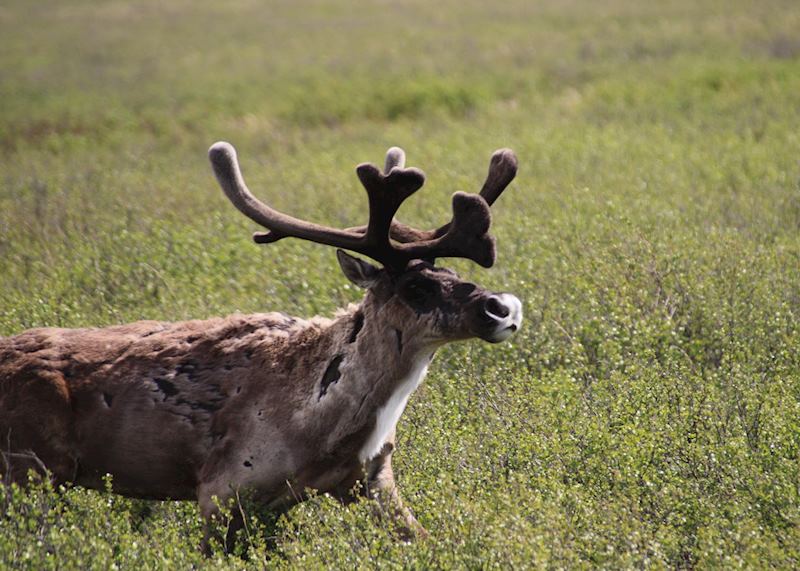
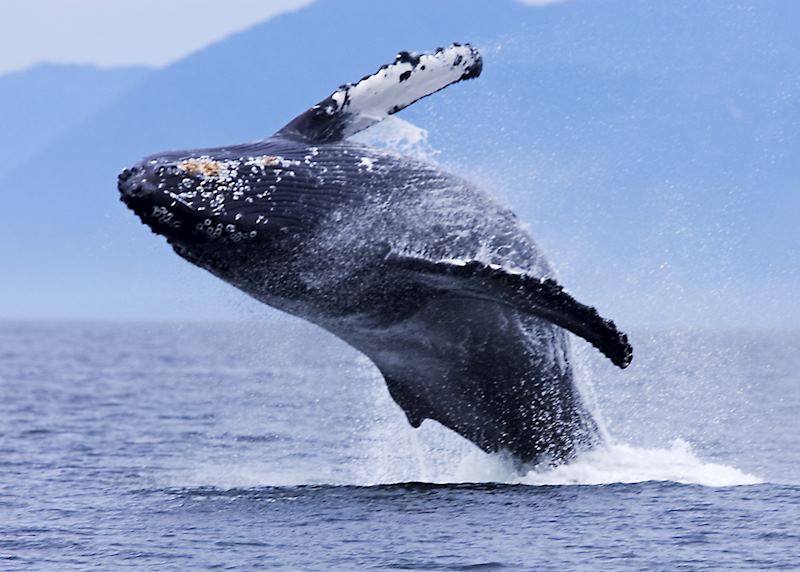
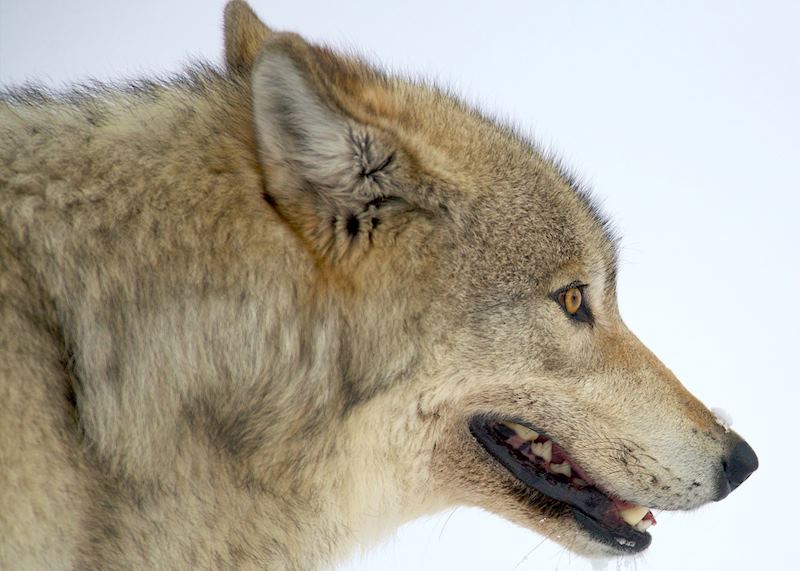
Caribou
To see a family of caribou in their tundra home is an impressive sight.
Imagine then what it must be like to see one of North America’s last true migrations — the great herds of caribou, hundreds of thousands strong, that traverse thousands of kilometres across the barren tundra, following the fresh grass growth and harried by packs of wolves.
A journey to the north is bound to bring you close to these magnificent animals and will surely be a highlight of your trip.
Whales
Canada and Alaska have some of the most varied and exciting whale watching opportunities anywhere in the world.
In Alaska and on the west coast of British Columbia orcas, minke, grey and humpback whales predominate whilst Québec’s Saguenay Fjord and the Hudson Bay see thousands of beluga whales during the summer months.
Blue whales, the world’s largest mammal, migrate from polar waters to the Gulf of St. Lawrence at the onset of winter whilst Eastern Canada’s strong Bay of Fundy tides and the north Atlantic currents around Newfoundland stir plankton, attracting finback, minke and humpback whales.
This is the best place in the world to see the endangered North Atlantic right whale.
Wolves
Wolves occupy a key place in the popular imagination the world over.
Often vilified and hunted almost to extinction in Canada by the 1950s, there are now estimated to be 50 to 60 thousand wolves across Canada and Alaska, occupying over 80 percent of their original range.
The grey wolf, usually a grizzled grey, though colour varies from white to black, is also known as the timber wolf and prefers the open tundra and forest where it will live in packs of 5 to 20 animals, depending on the abundance of prey.
Their main food sources are moose and elk which they hunt as in teams, primarily at night. You are most likely to see wolves at dawn or dusk in remote places when any other visitors have already departed. However, they are extremely elusive and you can consider yourself lucky if you come across one.
Keep your eyes peeled on the Bow Valley Parkway near Lake Louise or visit Algonquin National Park in Ontario, where public wolf howls are an incredible way to experience the presence of wolves.
Musk Oxon
Natives of Arctic Canada, Greenland and Alaska, Musk Oxen are noted for their thick shaggy coats, long curved horns and for the strong odour emitted by the males.
These sociable animals usually live in herds of between 10 to 20 animals but sometimes the herd can number several hundred, while their thick coats enable them to survive bitterly cold winter temperatures.
The Musk Oxen, or its ancestor, is believed to have migrated to North America between 200,000 and 90,000 years ago making it a contemporary of the woolly mammoth.
The largest population is on Banks Island in the Northwest Territories but herds can be found all over the northern tundra.
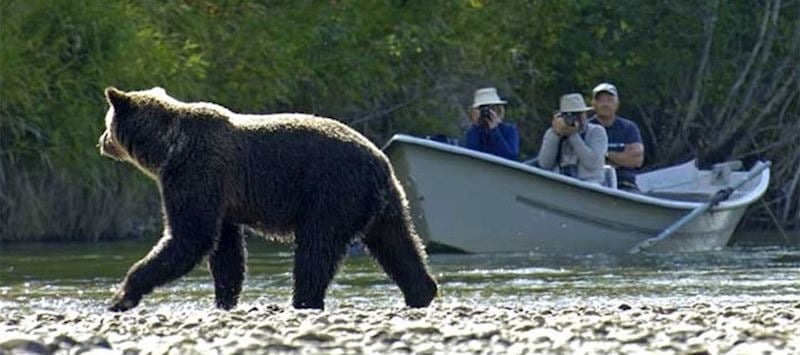
Grizzly bears
Where and when to see them
After hibernation grizzly bears leave their mountain dens in the spring and can be found throughout the forested regions of British Columbia, Alaska, Yukon and Northwest Territories. The bears avoid human contact if they can and consequently can prove rather elusive. The time for the best sightings is when the salmon are spawning, when bears descend from the mountains to join in the salmon feeding frenzy in the rivers. Generally speaking, salmon spawn in Alaska in July, during August in northern British Columbia and in September in southern parts of B.C. Katmai National Park and the Tongass National Forest in Alaska, and the Great Bear Rainforest in British Columbia, provide some of the finest bear viewing opportunities anywhere in the world.
Where to stay
The best bear viewing opportunities centre on national parks where there are very limited accommodation options. For this reason many of the remote national park lodges are rustic with very limited facilities but are usually in utterly spectacular locations and staffed by extremely knowledgeable guides. We work with the best wilderness lodges, often private, to ensure you get the most out of your stay. Some wonderful bear watching destinations are accessible by a short light aircraft flight from larger towns, giving more accommodation options, whilst others are accessed by small comfortable yachts.
Grizzly bear key facts
- Normally solitary animals, they gather in numbers alongside rivers during the salmon spawn.
- Every other year females produce between one and four cubs of which they are very protective.
- After polar bears grizzlies are the largest bears, with males reaching up to three metres stood on their hind legs and weighing up to 1,200 pounds.
- In spite of their massive size, these bears can run at speeds of up to 64 kilometres per hour.
- Grizzly bears are omnivorous, with their diet consisting of grasses, roots, berries and shellfish as well as moose, deer, sheep, elk and, of course, salmon.
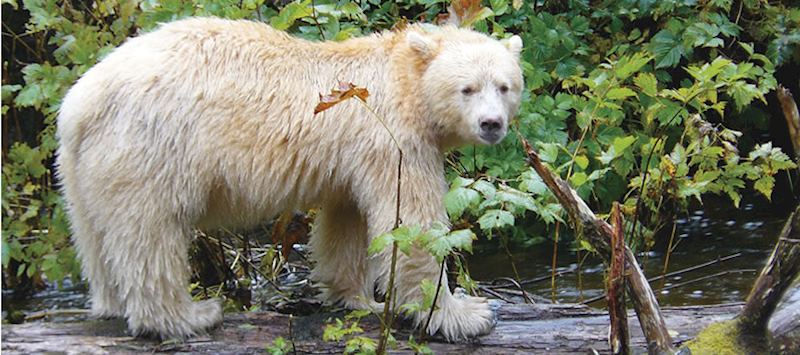
Kermode bears
Where and when to see them
The best time to see Kermode bears is in September, when the salmon are spawning. The fish draw the bears down to the rivers from the surrounding forests to gorge themselves before their winter hibernation. Kermode bears are only found in western British Columbia’s Great Bear Rainforest, between Princess Royal Island and Prince Rupert.
Where to stay
We work with an exclusive floating wilderness lodge on Princess Royal Island which makes the perfect base for exploring such a pristine wilderness area. In addition, it is possible to travel by yacht, exploring this spectacular coastline, its wildlife and First Nations culture, over a week or more.
Kermode bear key facts
- The Kermode bear is also known as the Spirit bear because of its rarity and because a small percentage of them have white coats.
- Kermode bears can only be found in what is known as the Great Bear Rainforest, located in the central region of western British Columbia, with the highest concentration being found on Princess Royal Island.
- As a result of habitat loss, logging, mismanagement, and interbreeding with the mainland black bears that don't carry their unique gene, the Kermode bear is facing eventual extinction.
- Of an estimated 1,200 Kermode bears, fewer than 200 are white, making these bears an extremely rare and, according to the indigenous First Nations, a considerably auspicious sight.
- Ninety five per cent of the Kermode bears' diet is made up of salmon which is abundant in western B.C. Salmon is particularly important when it comes to the bears' fattening up before hibernation. They also feed on green plants, berries, nuts, and insects.
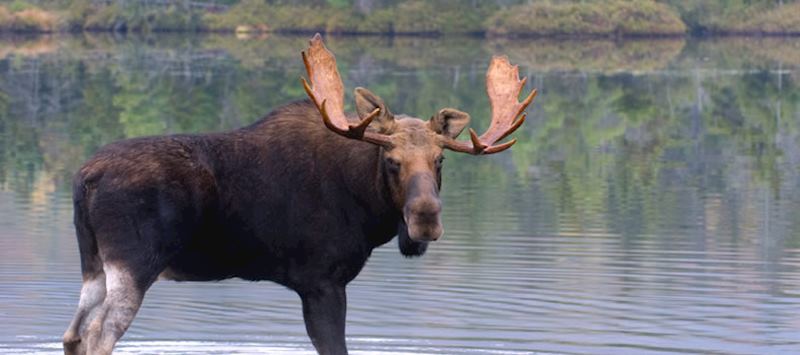
Moose
Where and when to see them
Boggy woodland and wetland regions are perfect moose habitat and dawn and dusk are the best times of the day to spot them. Some of the best places to encounter moose are New Brunswick, Newfoundland, Algonquin Provincial Park and Alberta’s Banff and Jasper National Parks. In Alaska they are particularly abundant in Denali National Park and the Kenai Peninsula.
Where to stay
A variety of accommodation is available to suit all styles, tastes and budgets depending on the region. Please ask our country specialists for their expert advice and suggestions about where to stay.
Moose key facts
- Moose can most frequently be seen at dawn and dusk in wet, boggy woodland, foraging for birch, willow, alder and aspen saplings.
- Mating occurs in September and October when both sexes will call to each other using heavy grunting and wail-like sounds.
- They are generally solitary, with the strongest bonds between mother and calf.
- A full-grown moose has few enemies, but a pack of wolves can still pose a threat, especially to females with calves.
- The male will shed his antlers after the mating season and conserve energy for the winter. A new set of antlers will then grow back in the spring.
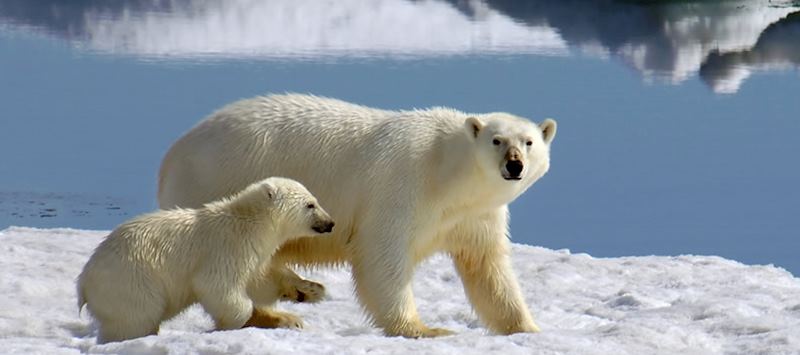
Polar bears
Polar bear key facts
- Polar bears are found in Denmark (Greenland), the remote Norwegian archipelago of Svalbard, Canada and Alaska; Audley operate trips to all of these places.
- They are the largest land predators in the world, preying mainly on seals although they will eat any animal they can catch, including humans (it's the only animal known to actively stalk humans).
- In winter, they spend most of their time on Arctic ice floes, patiently waiting beside seal breathing holes for a seal to appear. In summer they have to retreat back onto land as the ice melts and it's here that they have to change their hunting approach by sneaking up on seals while they rest.
- Their remarkable sense of smell enables them to detect a food source from over 30 km away, which unfortunately, often brings them into conflict with humans.
- The best method of seeing them close up is via an organised trip on the specially adapted Tundra Buggy. From one of these vehicles you can often get (safely) within touching distance and it is then you realise just how big these animals really are.

